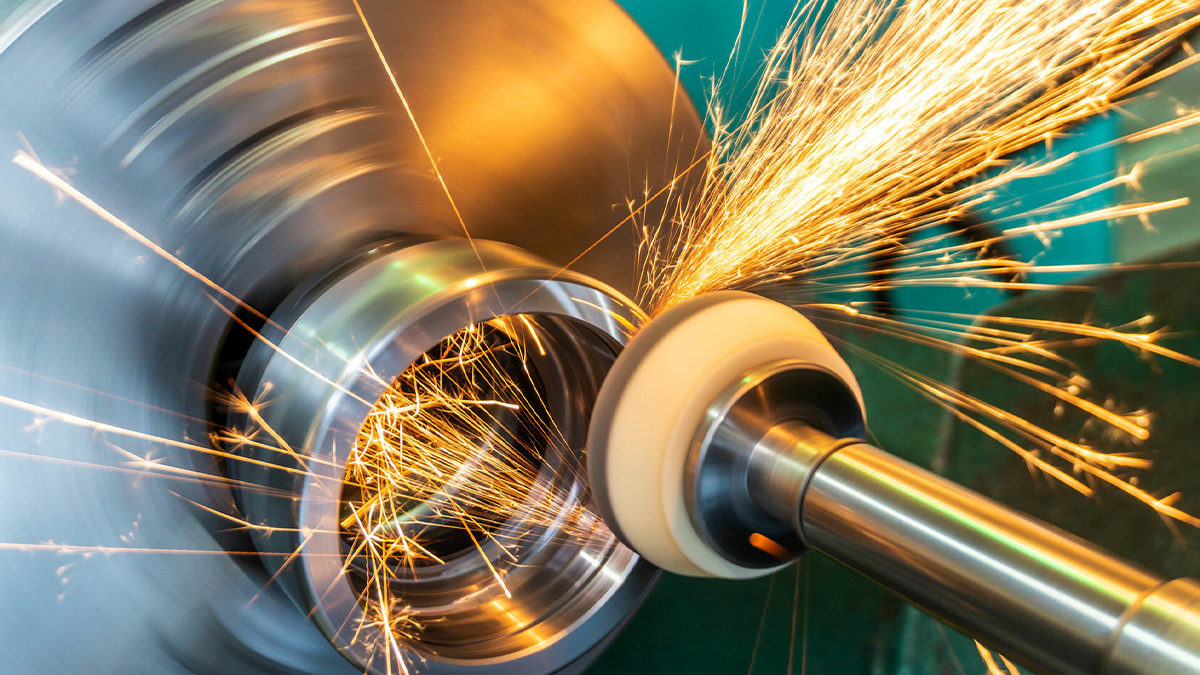Two super-hard materials which are commonly used in industrial processing are diamond and cubic boron nitride. After a series of processing procedures, these two super-hard materials can be made into various tools or used directly in various devices. Here we focus on one application, the diamond grinding tool.
What Is a Diamond Tool?
A diamond tool is a cutting, grinding or polishing tool with diamond grains fixed on the working parts of the tool via some kind of bond material or by some other special means. Diamond tools are used for cutting, grinding, and drilling. Diamond is also used as an abrasive material for polishing stone, concrete, ceramics, bricks, glass, fire-proof materials and other similar hard materials. Because diamond is made of carbon, it can dissolve into steel or iron, leading to tool wear and work hardening, so should not be used for cutting workpieces made of these materials. Cubic boron nitride can be used for these types of applications.
There are two types of diamonds: natural and man-made. It is the hardest substance among known materials and has the strongest ability to refract light, so large-grained natural diamonds have long been the known as the "king of gems". Diamond also has the highest strength, thermal conductivity, and velocity of sound transmission among known materials. It has a small sliding friction coefficient, high chemical and thermal stability and is highly hydrophobic. It is widely used in sawing tools, drilling tools, super-hard tools, dressing tools and wire drawing dies.
Diamond abrasive can be used along with binders made of metal powder, resin powder, ceramic and/or electroplating metals to form a circular grinding tool called a diamond grinding wheel. The diamond grinding wheel is generally composed of a working layer and a transition layer. The working layer, also known as the diamond layer, is composed of abrasives, and is the working part of the grinding wheel. The transition layer is composed of binders and fillers that firmly connect the diamond layer to the base substrate. The quality and accuracy of the grinding wheel depend a lot on the matrix.
A diamond grinding head is often used for non-metallic materials such as stone and ceramic materials. It is fixed onto the base of the body of the grinding tool. New types of tools are being developed that have high grinding performance, simple manufacturing, low cost, and are suitable for large-scale grinding.
A new type of manufacturing process has been developed that uses artificial diamond and cubic boron nitride as raw materials to make flexible, coated abrasive tools. These flexible, super-hard abrasive products include: abrasive belts, sand sleeves, sand discs, sand sheets, sponge hand wipes and other forms. Flexible diamond and cubic boron nitride products are widely used for grinding and polishing stone, glass, ceramics, synthetic materials, cemented carbide, non-ferrous metals, iron-based alloys and other hard materials. Due to its high hardness and high single-piece compressive strength, super-abrasives have the advantages of high grinding efficiency, low grinding temperature, good workpiece surface quality, and stable grinding performance. Diamond abrasive belts have been proven to be very cost-effective for processing of automotive glass and high-grade glass. It has better grinding force, chip removal and heat dissipation than traditional diamond grinding belts.
Diamond sawing tools include various saw blades such as circular saw blades, gang saws, band saws, wire saws, etc. They are mainly used for cutting non-metallic materials such as marble, granite and concrete.
Drilling tools mainly include synthetic diamond geological drill bits, oil (gas) well drill bits, and engineering thin-wall drill bits, which are respectively used for geological exploration, oil (gas) exploration and exploitation. Synthetic diamond geological drill bits are some of the most important tools used in industrial applications and for drilling holes in building walls and foundations. Drill bits can be roughly classified into: core drill bits, full-section drill bits, and engineering drill bits. Among them, the most widely used is the geological exploration core drill, which can be divided into impregnated drill bits and surface inlaid drill bits. They are manufactured using hot pressing, dipping, cold pressing, sintering, and electroplating.







.png)






